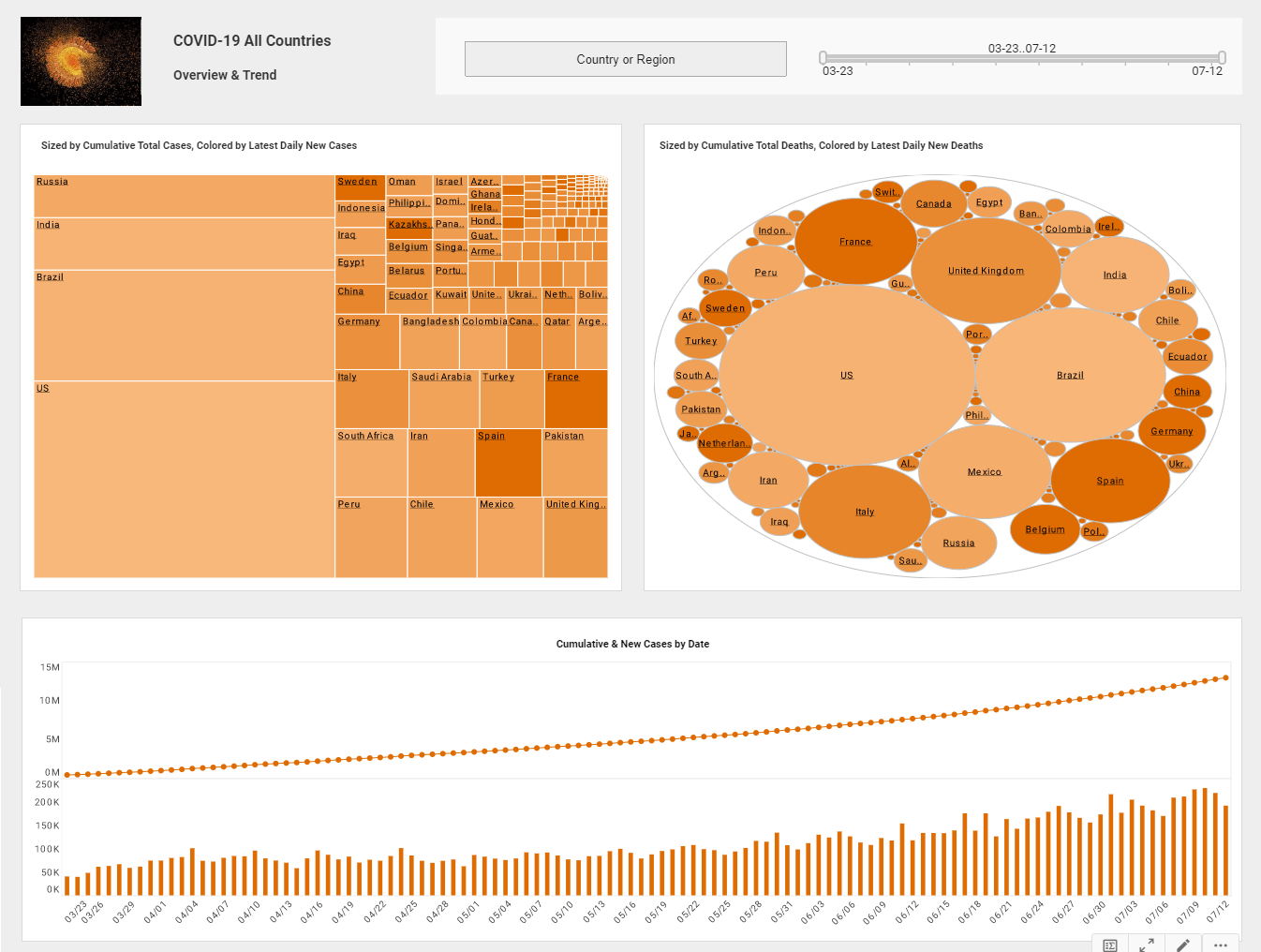InetSoft on DM Radio: How Impactful is Unstructured Data Analysis?
This is the continuation of the transcript of DM Radio’s program titled “The Eyes Have It: Ten Reasons Why Data Visualization Rocks.”
Suzanne Hoffman: You know, I have a wonderful example. Over the holidays when people were out shopping, an organization, which we will go nameless, actually ran out of stock of product. This was absolutely all over the Internet. It was on Twitter feeds, and there was a team of people who were working for a competitor that were actually monitoring Facebook and Twitter to see what was happening over a Black Friday.
They picked up on this and started responding to the Twitter feeds about coming over to their store to actually acquire those same goods that were out of stock in the first one. They were also suggesting other products that they may buy. I mean this is sentiment analysis. There was a lot of negative sentiment against this one store or one chain, and it came back, and it's not something that really comes up in metrics. It's Big Data. It's unstructured data. It's Twitter feeds. It's real time data, and they are making decisions for the customer, and that pulls revenue back to the second chain, and it was measurable revenue. That’s the kind of impactful decision making that can go on when I can actually visually start to look at the impact of what unstructured data means to my bottom line.
Eric Kavanagh: Yeah. And that’s also called agility, right?
Suzanne Hoffman: Exactly.Agility in Action
Eric Kavanagh: I mean that’s agile if you can respond very quickly to what's happening in the marketplace. There are certain industries I think that are much better at dealing with that, and I think retail is one of them, right, because it’s just very, very competitive, right?
Suzanne Hoffman: I think health care is another one. I mean health care to stop infection, to stop challenges internally as you are going through whether it be a medical procedure or just something that’s happening in the industry that’s causing a breakout of some streptococcal virus or something.
Eric Kavanagh: Yeah right. Well we certainly hope that healthcare would be on top of those things. They have a lot of regulations to deal with too so that’s obviously a bit of a challenge. But no, that’s a very interesting point. And let's see, we have got about one minute left before the next break. What are some of the most effective usages you have seen Suzanne of data visualization?
Suzanne Hoffman: I think that the actual visualization that people use to truly make impactful decisions, just they don’t need to be very strategic or global decisions, they can be just fulfillment decisions by an individual at an organization that they actually pass information off to somebody else that then shares it with somebody else and each step of the way with the visualization.
The visualization can be interactive, and the semantic layer can be much more personalized to the individuals. I see threads of decisions being made based on the same information but people using that information differently, and they use it to make their own decisions. So, I think this sense of collaboration and sharing is becoming endemic and it’s appropriately so in context with visualization.
How an Urban Vertical Farm Uses StyleBI for Unstructured Data Analysis
Urban vertical farms generate massive volumes of data from diverse sources, including sensor readings, climate control systems, hydroponic nutrient levels, and imaging systems for plant health monitoring. Much of this data is unstructured, such as images of leaf growth patterns, textual notes from technicians, or IoT logs with inconsistent formats. By using StyleBI, the urban vertical farm can consolidate these unstructured datasets alongside structured operational data, enabling a unified view for analysis and decision-making. This capability allows farm managers to extract meaningful insights from previously underutilized information, improving both yield and operational efficiency.
StyleBI’s data mashup and visualization features allow the farm to convert complex unstructured data into actionable dashboards. For example, image recognition algorithms can process leaf or fruit imagery to detect early signs of disease, while logs and technician notes can be parsed to track maintenance issues or anomalies in nutrient delivery. By integrating these insights into interactive dashboards, the farm team can prioritize interventions and respond quickly to potential problems. This real-time feedback loop reduces crop losses, optimizes resource use, and enhances overall farm productivity.
Additionally, StyleBI enables predictive and trend analysis using unstructured data, helping urban vertical farms anticipate challenges and plan proactively. By analyzing patterns in environmental data, plant growth imagery, and operational logs, the farm can forecast yield, schedule labor more effectively, and adjust climate controls to maximize growth conditions. The combination of self-service dashboards, real-time integration, and the ability to handle unstructured data transforms the farm’s decision-making process from reactive to proactive, giving the organization a competitive edge in managing complex urban agriculture operations.


